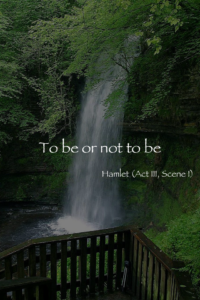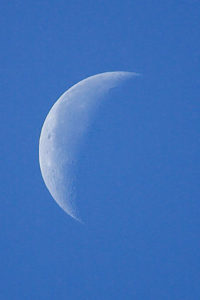http://www.darkladyplayers.com
If you don’t recognize the name, John Hudson is known for having put forth Amelia Bassano Lanyer as the latest contender for the Authorship Question (also known as the “Shakespeare was a black Jewish woman?!” theory).
When I first posted about the theory I wondered aloud if it was a joke. I also wondered why the discussion is always about As You Like It, since it seems that you’d want to go right to Shylock if you’re going to argue that a Jewish person created him. So when I got email from Mr. Hudson, I apparently have no shame, I dove right in and asked both questions :). Answers printed with his permission:
Q: With all due respect, are you serious? Or is this some larger satirical joke on the Authorship question as a whole that’s gone over my head?” (paraphrased)
A: Actually I am serious–which is why in March last year I went to London to present this theory to Mark Rylance and the Shakespearean Authorship Trust, who treated it seriously and brought her in as candidate number 8 at the top of the ‘other candidates’ section of their website. I would also not be spending money putting on demonstration allegorical versions of the plays unless I was serious!
Q: Why have I not heard anyone ask about Merchant, or even Taming of the Shrew? Why would Bassano have written such misogynistic, anti-Semitic works?
A: This theory holds that the plays are written as allegories—as was much of Elizabethan and Renaissance literature—so they have a meaning in some cases on the surface that is opposite to what they really mean underneath. Both MOV and Shrew are quite complex, so it is easiest if I begin referring you to my analysis of more straightforward plays like MND and AYLI (which we are currently rehearsing for production in late July). Once you see how those work it is easier to make analogies to the others. For instance I would show why the way that Adam disappears half-way through AYLI is a parallel to the way that Shylock disappears half way through MOV–and what happens to them is similar. (I would however refer you to the literary signatures she has left on the two Shrew plays, which have also recently been detected by Rene Weis in Shakespeare Unbound pg 177).
(I certainly plead ignorance regarding the depth of these arguments, but that answer to the Shylock question does seem similar to the “nonono, it’s not anti-Semitic, it’s showing us the dark side of anti-Semitism” case that we’ve spoken of.)
Hudson goes on to add, “The only person who has ever considered Amelia Bassano was the Russian critic Gililov, who identified the Shakespearean quality of her poetry (The Shakspeare Game pgs 305-312) then decided as a lower class woman she could not have written it, even though she was educated by a duchess and a countess from the age of 7. Once you have read the two documents will be happy to talk further, and yes please use it in your blog, I would like to get the public debate going!!”
[John did attach two PDF documents for me, but I don’t have a good way to attach them to this post. Perhaps if he is reading he can provide links.]
Thank you to John Hudson for his response, and the boatload of reference material he provided. I’ve got some reading to do.

 http://www.psychiatrictimes.com/display/article/10168/52396
http://www.psychiatrictimes.com/display/article/10168/52396 So a friend asks me today if I know the story of Uranus’ moons. Of course I know that they are
So a friend asks me today if I know the story of Uranus’ moons. Of course I know that they are  The thing is, the book was King Lear. More specifically, it was one of the comic versions of Shakespeare that I have. I also have The Tempest as I’ve mentioned, Taming of the Shrew, and Romeo and Juliet. In general I have refused to actually read them the story of King Lear, as we don’t do that degree of violence in my house (hence my emphasis on the non-violent Tempest).
The thing is, the book was King Lear. More specifically, it was one of the comic versions of Shakespeare that I have. I also have The Tempest as I’ve mentioned, Taming of the Shrew, and Romeo and Juliet. In general I have refused to actually read them the story of King Lear, as we don’t do that degree of violence in my house (hence my emphasis on the non-violent Tempest).